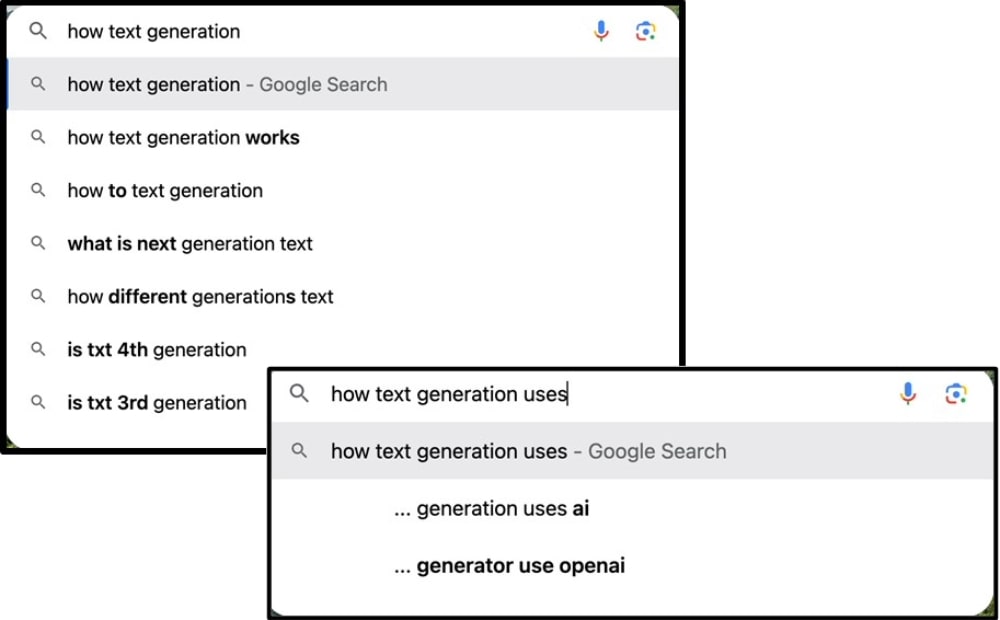Explainer: How ChatGPT works in a sentence
AI literacy is critical for business with the use of generative AI technologies such as ChatGPT, write UNSW Business School's Alba Olivares Nadal and Sam Kirshner
Kodak's 19th-century camera – the original black box – was revolutionary since users could capture moments with a simple press of a button. Users did not need any knowledge or expertise of how cameras worked to enjoy photography; all film development and printing was undertaken by Kodak. In fact, Kodak’s initial slogan was "You press the button, we do the rest", epitomising that understanding the inner workings of technology was not typically necessary for its use.

Consumers and employees, being blissfully unaware of how the technology works, have always had limited impacts on organisations. For example, consider a tool like Microsoft Excel. Does it matter if we understand how Excel was programmed and how it makes calculations? No! All that matters is that we know how to use the software.
However, as technology continues to evolve, this paradigm is shifting. In particular, with the advancement and widespread adoption of generative AI technologies and large language models (LLMs) like ChatGPT, understanding how these systems work becomes increasingly vital for informed decision-making and responsible use. So, fostering AI literacy within organisations is necessary to ensure its effective deployment.
Low AI literacy problems
Unfortunately, AI literacy in many organisations remains low. As the adoption of AI technologies continues to spread, there is often a lack of understanding among employees about how these systems function. This deficit of AI literacy poses significant challenges for organisations.
Without a basic understanding of AI principles and mechanisms, employees may struggle to effectively leverage AI technologies in their work. They may also overlook potential ethical implications or biases inherent in AI systems, leading to unintended consequences or reputational damages. There have already been several high-profile cases of individuals and companies, including lawyers and major airlines, where misunderstanding and misusing ChatBots have triggered detrimental consequences.
Read more: Rolls-Royce's Aletheia Framework: pioneering safety-critical AI
A key mission of UNSW is to build AI literacies and capabilities for staff and students to better prepare them for this emerging AI-driven world. This helps enable our community to better respond to the changing professional landscape impacted by AI technologies. To do this, UNSW Business School is helping to lead the development of AI literacy. In the course AI Fluency, we discuss with our students how an AI like ChatGPT can generate high-quality responses to almost any question. Does this mean that LLMs understand us? The short answer is no! So, how can they respond to our inquiries in an intelligible way?
To show our students how LLMs work, we run a simple exercise (which can be adopted by almost anyone) that helps them grasp how it's possible to create coherent and often (but not always) accurate answers in response to a text you don’t understand. As our class typically does not include anyone who speaks Spanish, we present them with a sentence in that language:
“En la cena, me gusta beber _______.”
The task is to fill in the blank. Give it a try!
Learn more: UNSW Business AI Lab
This task is naturally almost impossible for someone unfamiliar with Spanish. When they inevitably can’t complete this task, we tell them that this is the problem that ChatGPT faces: Selecting the next word given a sequence of words. So, we ask our students what they need to accomplish this task. Of course, the answer is data. So, we then provide our students with a set of Spanish sentences, which we call “training sentences”:
- "Después de correr, bebo mucha agua.”
- “Sevilla es conocida por su rica historia y su vibrante cultura”
- "Cuando hace calor, el agua es la mejor bebida.”
- "Para mantenerme hidratado, siempre llevo una botella de agua y bebo mucho de ella.”
- "El agua fría es refrescante en un día de verano.”
- "El médico recomienda beber ocho vasos de agua al día.”
- "La montaña más alta de España es el Teide."
- "La paella es un plato tradicional valenciano.”
- “Bebo 2 litros de agua al día”
The AI model behind LLMs
We are confident that, after a few minutes to consider these sentences, you can figure out what the missing word is (the right answer at the end of this article). How did you and our students figure this out? By finding patterns in the data. At a very high level, you broke down the sentences above into smaller pieces and filled the gap with the word that you thought had the highest probability of appearing according to the training sentences.
Well, that’s exactly how transformer models (the AI method underpinning LLMs) work! For example, this method allows Google to complete your sentences as you type. Similarly, it's what enables your mobile keyboard to autocorrect your text, occasionally resulting in some unintentionally amusing miscommunications.

If you, our students and LLMs can accurately predict the next word with just a small sample of data, even when you don’t know what the sentence actually means, imagine the possibilities with the data underpinning most of the internet. Yet, even though you were able to pick the best word to follow in the sentence, you do not know what this sentence actually means. More data doesn’t mean that you have more meaning; it just means you are able to increase the coherency of the sentences.
If more data increases the quality of responses, then this also helps identify areas where LLMs thrive: producing text with lots of information and where approaches are standardised. Take the example of writing the introduction of a cover letter. As it usually follows a certain format, LLMs can use their extensive training data to craft such introductions efficiently. This capability makes it invaluable for creating consistent, formal communications like business emails, legal documents, and academic papers.
However, it might fail to provide credible references and accurate information. While generative AI can increase productivity, it can also increase the propensity for mistakes and using dated information. So, validating AI-generated content before dissemination, particularly in professional contexts, is imperative. To ensure your colleagues know how ChatGPT works, just say “En la cena, me gusta beber _______” and ask them to fill in the blank!
Subscribe to BusinessThink for the latest research, analysis and insights from UNSW Business School
The answer is “agua”, but this is based on the provided data. The sentence means, “I like drinking water at dinner.” So, there are many other words that could be filled in (e.g., wine, coke, orange juice). ChatGPT will randomise which words it selects based on the relative likelihood of what it believes is the most appropriate word for the context based on the training data.
Alba Olivares Nadal is a lecturer and Sam Kirshner is an Associate Professor in the School of Information Systems and Technology Management at UNSW Business School. Dr Olivares Nadal and Associate Professor Kirshner are part of The UNSW Business AI Lab, which works with partners to discover new business opportunities, overcome challenges to AI adoption and accelerate the next generation of leaders and entrepreneurs. For more information, please contact Professor Mary-Anne Williams.
